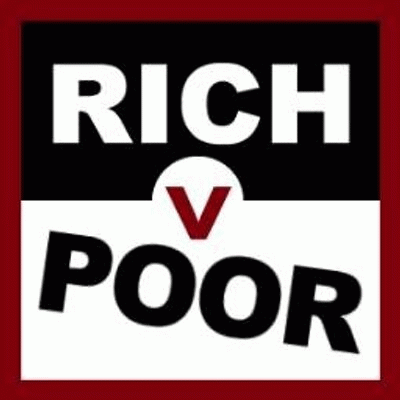This figure belies the incessant claims by the US political and financial elite that there is "no money" to pay for basic social necessities -- from jobs and decent wages to schools and other public services. There are ample resources -- more than at any time in history -- but these resources are monopolized by the narrow layer of ultra-wealthy individuals at the top of American society.
If the $81.8 trillion were divided equally among the 318 million people who live in the United States, there would be just over $250,000 for every man, woman and child. Poverty would be virtually abolished at a stroke. Hunger, homelessness and other forms of social deprivation would be dealt a death-blow.
But under capitalism, a social order based on profit and the accumulation of vast private wealth, such an equal division of society's resources is unthinkable. Instead, America in 2014 is a spectacle of ever-increasing riches at the top and steadily worsening conditions of life for the majority of the population.
Total national wealth increased by $1.49 trillion during the first three months of 2014, despite the fact that the US economy actually contracted, with total output declining by 1 percent, and more than a million people dropped out of the labor force and stopped looking for work because they had no hope of finding a job.
This apparent contradiction is explained by looking at the various components of the increase in wealth. The value of corporate stock rose by $361 billion in the first quarter, contributing one-fourth of the total wealth increase. These securities are largely in the hands of the wealthiest fraction of the American population.
Real-estate values jumped $758 billion, accounting for just over half the total wealth increase. While more than 60 percent of Americans are homeowners, many have little (or negative) equity once the mortgage debt is subtracted. The increased home values were concentrated in the mansions of the super-rich, not the modest homes of working people.
According to figures published by Redfin, a real estate group, from January through April 2014, sales of the top 1 percent of US homes, those priced at $1.67 million or more, have risen 21 percent, while sales of the remaining 99 percent of homes have fallen 7.6 percent.
Meanwhile, because of the wave of foreclosures and because young workers can no longer afford to buy their first homes, the home ownership rate in the United States has fallen from its peak of 68.9 percent in 2006 to 64.8 percent, about the same as it was in 1965.
The Financial Times, which published the Redfin figures, noted similar trends in consumer sales: Sales by luxury retailers such as LVMH (Louis Vuitton, Bulgari) and Tiffany rose by 9 percent; sales by retailers with mainly working class customers declined. Walmart was down 5 percent, Sears' sales fell by 6.8 percent. At the lower end, only cut-rate outlets where more and more Americans must shop to stretch their dollars saw increased sales. Dollar Tree, the largest such retailer, recorded a sales increase of 7.2 percent.
The Financial Times noted that household wealth is up 43 percent since the depths of the economic slump in 2008, despite the slow or nonexistent recovery in the labor market and an actual decline in median household income, down 7.6 percent since 2008.
The newspaper observed, "The gains show the effectiveness of policy in recreating the wealth lost in the recession, but its effect in boosting the economy is limited, because much of the benefit has gone to wealthy households that own stocks and large houses" The disconnect between the real economy and markets continues to grow."
A Financial Times columnist commented: "The culprit is rising income and wealth inequality -- a central economic truth of our time."
The dramatic increase in social inequality is the direct result of the policies pursued by the US Federal Reserve and the Obama administration, and by capitalist governments throughout the world, as they prop up financial markets with vast bailouts and extensions of credit, restoring the profits and wealth of the super-rich, at the expense of the jobs and living standards of the working class. New York Times economics writer Neil Irwin pointed to these trends in an analysis published online June 4 that noted there was an increasing disconnect between economic growth and the wellbeing of the poorest sections of working people.
He wrote:





